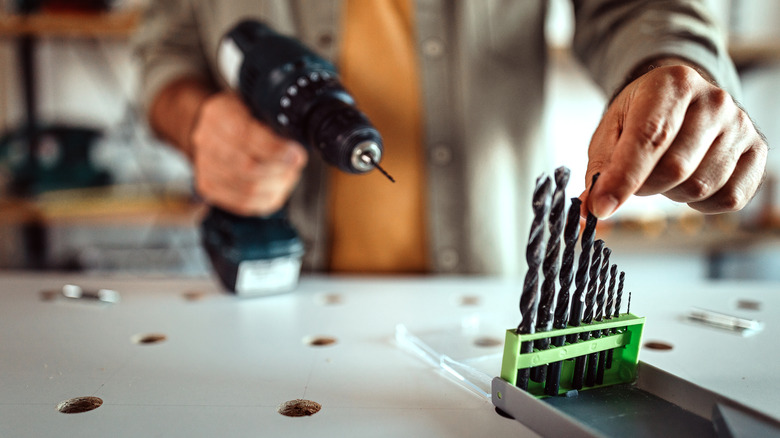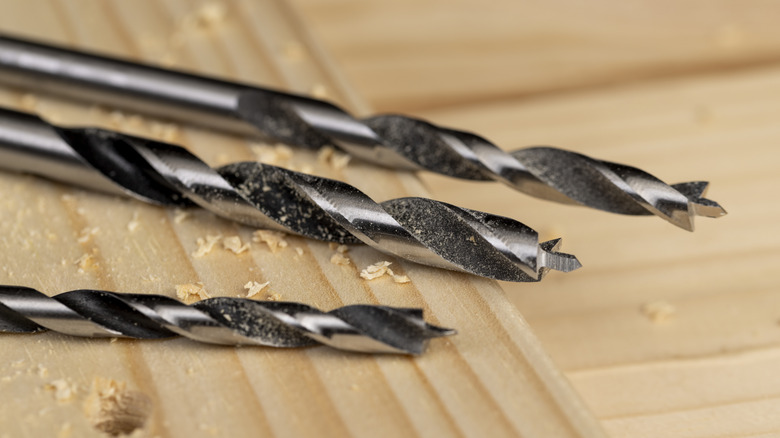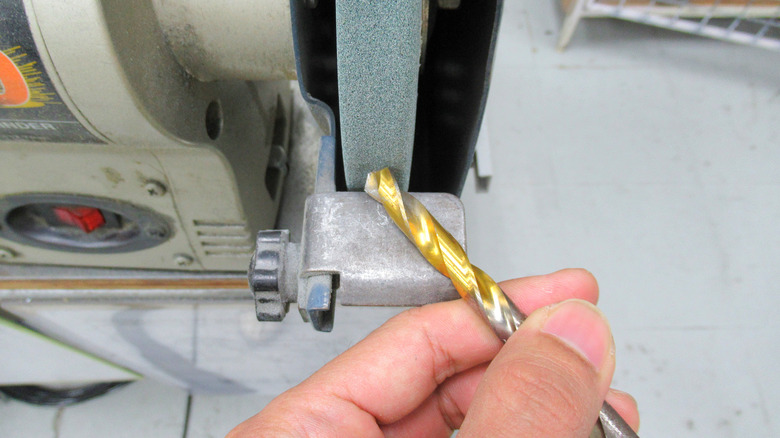Signs It's Time To Sharpen Your Drill Bits (And How Often You Should)
We may receive a commission on purchases made from links.
A hand drill is only as good as its drill bit. You may have one of the top-rated drills for home projects, but it won't be able to do the job well if it doesn't have a bit that's sharp and designed to carry out its intended use for a specific material. However, drill bits also eventually lose their sharpness, and it can happen in little time if you use them more often. You'll know a drill bit has become dull when it starts to show signs of struggle when in use. For instance, if your drill bit produces excessive heat or smoke in the middle of a DIY project, that's one of the clearest signs that it's no longer as razor sharp as before. When this happens, it's time to take that drill bit off the tool and sharpen it.
A drill bit is supposed to slice or bore through a material cleanly and effortlessly. An overheating bit means its edges are already dull, so it is struggling to cut through the surface. While you may still push through with your task using a dull drill bit, the intense friction it produces can damage and weaken both the bit itself and your work surface. This leads us to another sign, which is when your drilled holes are no longer as precise and clean as before. Since a dull drill bit's cutting lips are worn, it won't be able to bite into the material properly and shred through it efficiently. As a result, the holes produced tend to have rough or uneven edges.
Other signs your drill bit's already dull
Drilling perfectly straight holes with a hand drill shouldn't be too hard when you have a sharp drill bit. That's because the knifelike edges of the bit make it easy to slice through different materials. More often than not, a gentle push with steady hands does the trick easily. So, if you notice bits become stuck in the material more often or that you suddenly need to apply more pressure or force and allow more time for the bit to penetrate the surface, it's a fair sign that you badly need to sharpen the drill bit before moving forward with your project. A dull tip always feels like you're forcing the drill too much to bore a hole instead of simply guiding it with minimal force. You may even hear some irregular squeaking, screeching, or groaning noises as the bits struggle to work through the material.
Finally, doing a visual inspection can help you determine if your drill bit badly needs some sharpening. If you see the bit's pointed end looks dull or its cutting edges are chipped, then it's obviously worn out, to say the least. Sharpening can help extend the life of your drill bit, so you don't need to buy a new one. However, if the flutes are already badly twisted or if the bit's body is no longer straight and sturdy, replacing it might be the better option, so that you can avoid any untoward accidents at your workstation.
When is the best time to sharpen your drill bits?
There is no fixed schedule for when you should hone or sharpen your drill bits because the rate at which they dull will largely depend on how frequently you use them and what materials you're using them on. If you're using your drill correctly and choosing the right drill bit for your project (e.g., a high-speed steel brad point bit can work for wood, while a carbide-tipped masonry bit would be better for concrete or tile), you can maximize the time between sharpening sessions. The best time to sharpen a drill bit may be at the first sign of it struggling to work as intended. However, if you are already in the middle of a project, a good rule of thumb to follow is to sharpen the drill bit after boring 10 to 20 holes. Using a bench grinder is a popular technique for reviving these pieces, but perhaps the best method to sharpen dull drill bits is to use a specialty tool like the Drill Doctor to simplify and speed up the process.
For occasional DIYers, our advice is to check the cutting edges of your drill bits every few months or before use. For frequent users, it's wise to inspect your drill bits weekly to catch any sign of dullness before it can affect your performance. Do remember that sharpening is only worthwhile if the bit is still in good shape. Don't risk sharpening or using a severely worn-out or twisted bit if you want to keep your workspace safe.


